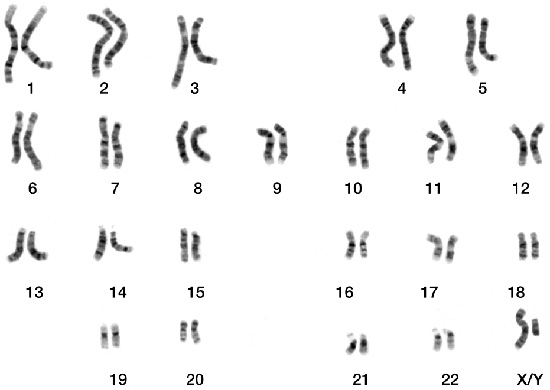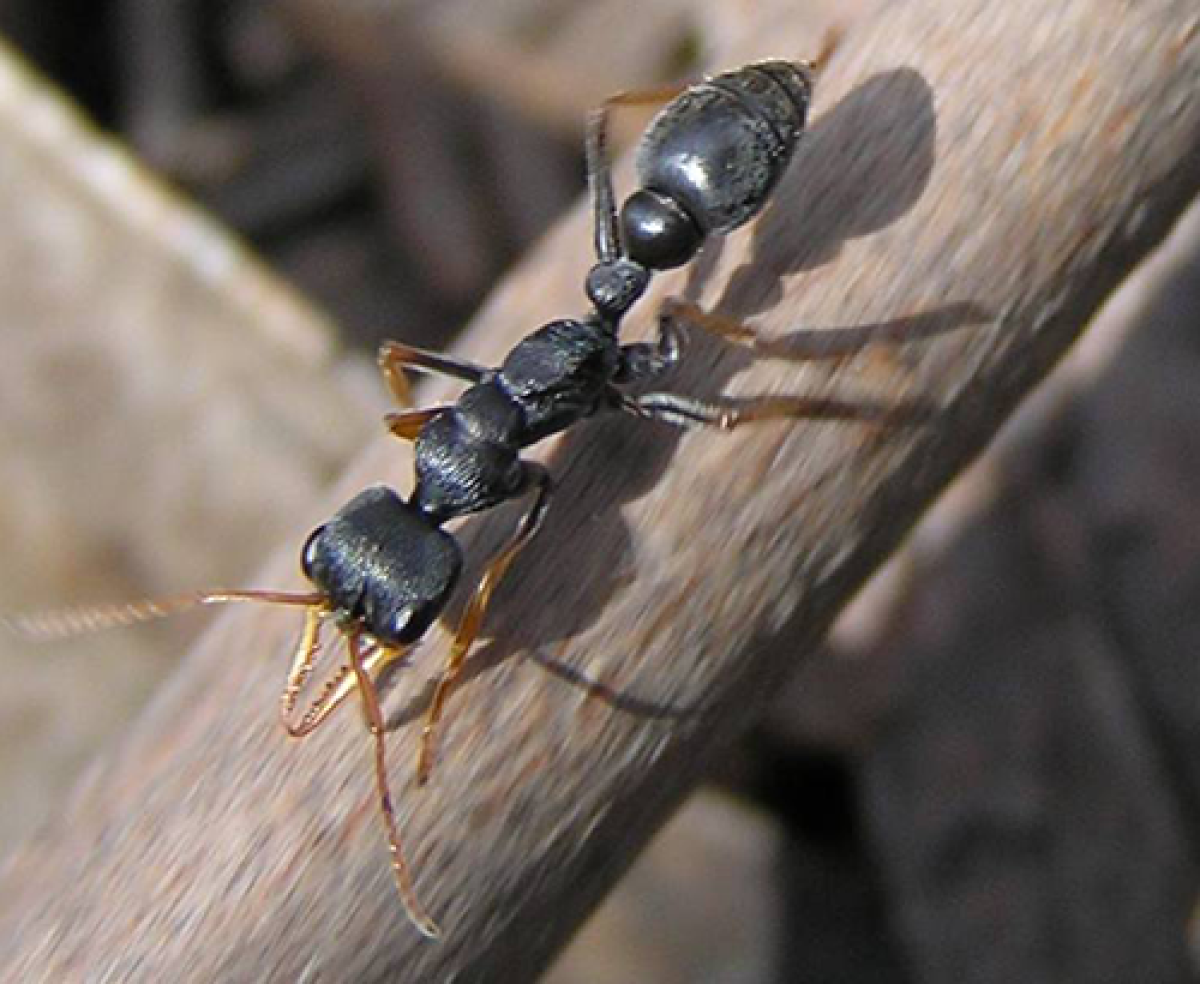Chromosomes and Genes
Take a moment to consider how traits are passed from parent to offspring inside the cell. The information for the traits of an organism is stored in DNA, as genes on chromosomes. All living things have genes and chromosomes. Depending on the plant or animal, the size and number of chromosomes are different. Think of chromosomes as giant set of instructions for living things.
Chromosomes Two-By-Two
Chromosomes come in matching pairs, one pair from each parent. Humans, for example, have a total of 46 chromosomes, 23 from the mother and another 23 from the father. With two sets of chromosomes, children inherit two copies of each gene, one from each parent.
The image below, call a karyotype, shows the chromosomes of a human, lined up in pairs. The only two chromosomes that do not always come in matching pairs are the sex chromosomes, X and Y. In humans, girls have two matching X chromosomes. Boys, however, have a Y chromosome and only one X chromosome. By looking at the sex chromosomes in the image below, we can tell that the person this karyotype belongs to is male.

References
Additional images and illustrations from Wikimedia. Ant picture taken by en:User:Ways
Read more about: Solving a Genetic Mystery
Bibliographic details:
- Article: Chromosomes and Genes
- Author(s): Dr. Biology
- Publisher: Arizona State University School of Life Sciences Ask A Biologist
- Site name: ASU - Ask A Biologist
- Date published: 20 Jul, 2010
- Date accessed:
- Link: https://askabiologist.asu.edu/chromosomes-and-genes
APA Style
Dr. Biology. (Tue, 07/20/2010 - 11:47). Chromosomes and Genes. ASU - Ask A Biologist. Retrieved from https://askabiologist.asu.edu/chromosomes-and-genes
Chicago Manual of Style
Dr. Biology. "Chromosomes and Genes". ASU - Ask A Biologist. 20 Jul 2010. https://askabiologist.asu.edu/chromosomes-and-genes
Dr. Biology. "Chromosomes and Genes". ASU - Ask A Biologist. 20 Jul 2010. ASU - Ask A Biologist, Web. https://askabiologist.asu.edu/chromosomes-and-genes
MLA 2017 Style

Be Part of
Ask A Biologist
By volunteering, or simply sending us feedback on the site. Scientists, teachers, writers, illustrators, and translators are all important to the program. If you are interested in helping with the website we have a Volunteers page to get the process started.

